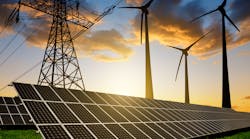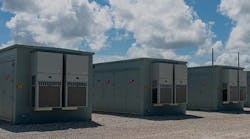Is your utility prepared for 30, 40 or 50% renewables? A number of states have mandates or goals to reach those levels and beyond. For example, California has enacted a mandate that 50% of its state-regulated utilities will get their power from renewables by 2030; same for New York. Hawaii has a goal that its utilities will obtain 100% of their electricity from renewable sources by 2045. Other states have more modest mandates or goals, and many of the related programs are driven by renewable portfolio standards (RPS). So what will be the impact of these mandates on our transmission and distribution infrastructure?
A number of utilities in California facing the 50% renewables mandate have asked for significant rate increases to help prepare their systems to meet the requirements. San Diego Gas & Electric (SDG&E) recently filed a rate case that requests the PUC to approve $2.2 billion for system upgrades, including improvements needed to increase distributed energy resource (DER) integration. Likewise, Southern California Edison (SCE) included a request for $2.1 billion in its most recent general rate case for grid modernization required to accommodate an increasing level DERs. Pacific Gas & Electric’s (PG&E) most recent general rate case requested a $1.15 billion increase, again siting grid improvements to better integrate and manage more renewable energy and other DER technologies.
So, it appears that at least some of the utilities facing the higher level renewables/DER mandates need fairly extensive system improvements to meet their state’s requirements. What about at the bulk transmission level? PJM did a renewables integration study a few years ago and concluded that the PJM grid could accommodate up to 30% renewables for energy supply with adequate transmission expansion (up to $13.7 billion) and additional regulation reserves (up to an additional 1,500 MW). The CAISO uses a Transmission Access Charge (TAC) to pay for needed transmission upgrades, including those for new renewable generation interconnection and integration costs. The TAC is expected to increase by over 55% to $13.83/MWh by 2023 to pay for transmission improvements, including those necessary to meet California’s increasing renewable energy mandate. The U.S. DOE has also done a number of studies to evaluate the impact of integrating a large amount of renewable energy in various regions of the U.S.
Without attempting to get into technical specifics, we see the following types of impacts/needs associated with integrating large amounts of renewable energy into our wholesale energy market:
- Transmission and interconnection investment associated with getting new supply to areas of use.
- Transmission and distribution investment related to greater output variability, production vs. load differences, need for more ancillary services and increased ability to manage over-generation conditions.
- Existing generation investment or retirement to address more extreme ramping, more frequent starts and stops and cycling.
- Increased forecasting, system monitoring and system controls.
At the distribution level, increasing numbers of renewables and DERs in general present a host of issues. One of the major challenges is that distribution system operators must transition from managing the safety and reliability of a system with a limited number of energy producers and unidirectional and predictable flow from substations to customers to a system with power flows from many sources at varying times of day and in different directions. These changes mean not only greater operational complexity, but also more complex maintenance and emergency operations. The result will be needed modifications in the design and operation of the distribution system and investments in new or upgraded circuits as well as additional tools, sensors and communication systems.
At the forefront of this new frontier of high levels of renewables and DER penetration, California has an interesting approach. The CAPUC has a number of proceedings underway to evaluate DER impacts to the grid, but also to identify how DERs can be part of the solution. Based on consensus recommendations of the Competitive Solicitation Framework Working Group (CSWFG) in the Integrated Distributed Energy Resources (IDER) proceedings, the Commission has identified four services that DERs can provide to the distribution grid: distribution capacity, voltage regulation / VAr support, grid back-tie, and resiliency services via microgrids. With proper advanced planning and appropriate performance guarantees, DERs providing these types of services could enhance the performance of distribution systems as opposed to creating operational challenges.
Who knows how far different states will go with renewable mandates or how popular DER systems will become? Based on recent experience, the trend is for more of these alternative technologies along with the T&D challenges/opportunities they create. It appears that utilities can take one of several approaches to these changes: They can be reactive—working with their states and regional transmission operators to deal with the T&D consequences of more renewables and DERs; or, they can be proactive—leading initiatives to influence the siting and capabilities of renewable and DER projects to enhance their T&D systems for the benefit of all customers. They say “love hurts”. Change can too, but that could depend on how we prepare for it.


